Accepted Scientific Name: Echinocactus polycephalus subs. xeranthemoides (J.M.Coult.) N.P.Taylor
Cactaceae Consensus Init. 5: 12. 1998
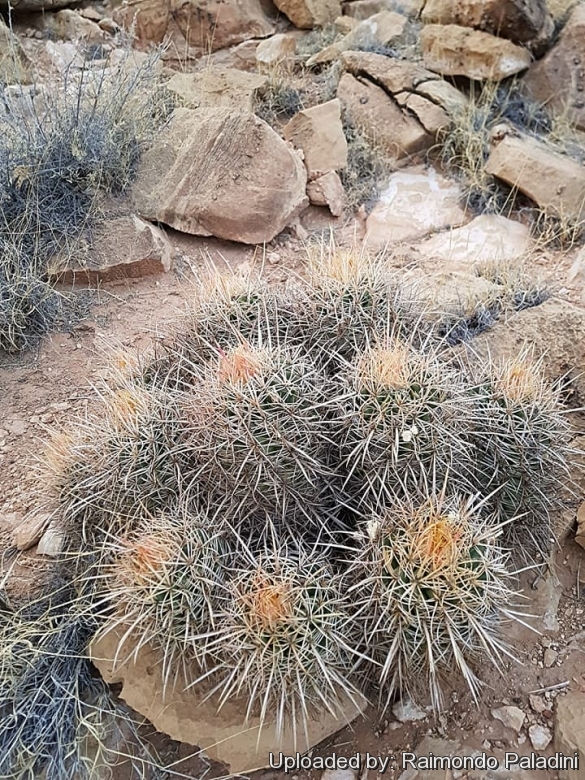
Echinocactus xeranthemoides (Echinocactus polycephalus subs. xeranthemoides) Photo by: Raimondo Paladini
Growing habit, near Cameron, Navajo reservation, Arizona, Usa.
Origin and Habitat: Arizona and southern Utah.
Altitude: (500-)1000-1500(-1700) m
Habitat: It grows in rocky hills, slopes, ledges and gravelly flats of canyons both on igneous and calcareous substrates and occasionally grow in clay soil of valley bottoms, in the Navajoan Desert, Great Basin and Mojave desert scrub and pinyon-juniper woodland.
Ecology: The flowers are diurnal, prevalently bee pollinated. Birds and packrats disperse the seeds. Seedling establishment is very limited by the arid climates. Although some individuals can exceptionally live for 100 years, they are usually much less long lived.
Synonyms:
See all synonyms of Echinocactus polycephalus
Common Names include:
ENGLISH: Woolly-headed Barrel Cactus, Many-headed Barrel Cactus, Harem Cactus, Cotton Top Cactus, Turk's Head
SPANISH (Español): Biznaga Chilitos
Description: Echinocactus polycephalusSN|940]]SN|940]] subs. xeranthemoides is similar to Echinocactus polycephalusSN|940]]SN|940]], but globose and smaller. It is caespitose and sprouts freely around the base forming unsymmetrical clumps with rarely more than twelve individual heads and is sometimes solitary. Ribs fewer and more spiny.
Stems: Globose, 2,5 to 18 cm high, light green, grey-green or yellow-green.
Ribs: 13, interrupted or somewhat tubercled, sharp on the margin.
Areoles: Circular, about 1 cm in diameter, often less than 2 cm apart.
Spines: About 12 (10 to 15), glabrate, when young whitish pink, red or straw coloured, but in age a dirty grey, slender and rather stiff, more or less annulate.
Radial spines: 3 to 4 cm long, more or less curved backwards.
Central spines: 4, one of them longer than the others, somewhat curved, rather stiff 3 to 6 cm long.
Flowers: Produced at the stems apex, bright yellow, 5 cm long; scales on the ovary and flower-tube linear, pink, papery, stiff, but not pungent, the longer ones 2 to 3 cm long, persistent; perianth-segments narrowly oblong, more or less serrate, apiculate or cuspidate; stamens included; style yellow, included.
Blooming season: Summer (In its native habitat habitat bloom in from June to August) and seeds mature about a month later.
Fruits: Shortly oblong, 3 cm long, densely and permanently white-woolly. Fruit scales tan, yellow, or reddish, ageing yellow, 16-30 mm, usually longer than dried tepals at fruit apex. The fruit dries slowly and may persist on the plant for several months and dehisce by a basal pore through which the small seeds pass easily.
Seeds: Rounded (rarely faceted) brownish black, smooth, shining, delicately tessellate/reticulate, 2,4-3,1 mm long.
Chromosome number: 2n = 22.
Bibliography: Major references and further lectures
1) Edward Anderson “The Cactus family” Timber Press, Incorporated, 2001
2) James Cullen, Sabina G. Knees, H. Suzanne Cubey "The European Garden Flora Flowering Plants: A Manual for the Identification of Plants Cultivated in Europe, Both Out-of-Doors and Under Glass" Cambridge University Press, 11/Aug/2011
3) David R Hunt; Nigel P Taylor; Graham Charles; International Cactaceae Systematics Group. "The New Cactus Lexicon" dh books, 2006
4) N. L. Britton, J. N. Rose “The Cactaceae. Descriptions and Illustrations of Plants of the Cactus Family.” Volume 4, The Carnegie Institution of Washington, Washington 1923
5) Curt Backeberg “Die Cactaceae: Handbuch der Kakteenkunde” Gustav Fischer Verlag, Stuttgart New York 1982–1985
6) Thomas Henry Kearney, Robert Hibbs Peebles “Flowering plants and ferns of Arizona” U.S. Dept. of Agriculture, 1942
7) Lyman David Benson, Andrew Alexander Nichol “The cacti of Arizona” 1-5 University of Arizona, 1940
8) University of Arizona “Biological science bulletin” 5: The University, 1940
9) Raymond M. Turner, Janice E. Bowers, Tony L. Burgess “Sonoran Desert plants: an ecological atlas” University of Arizona Press, 2005
10) John Borg “Cacti: a gardener's handbook for their identification and cultivation” Blandford P., 1970
11) United States National Herbarium “Contributions from the United States National Herbarium” BiblioBazaar, 2010
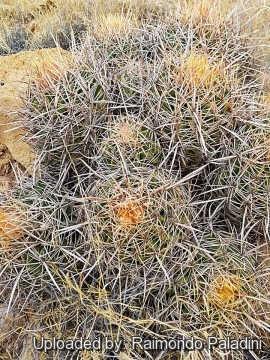 Echinocactus polycephalus var. xeranthemoides, near Cameron, Navajo reservation, Arizona, Usa. (Echinocactus polycephalus subs. xeranthemoides) Photo by: Raimondo Paladini
Echinocactus polycephalus var. xeranthemoides, near Cameron, Navajo reservation, Arizona, Usa. (Echinocactus polycephalus subs. xeranthemoides) Photo by: Raimondo Paladini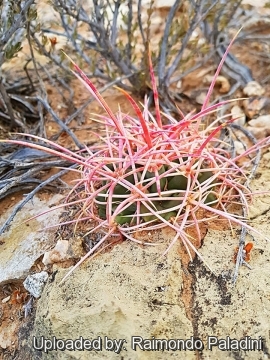 Echinocactus polycephalus var. xeranthemoides, near Cameron, Navajo reservation, Arizona, Usa. (Echinocactus polycephalus subs. xeranthemoides) Photo by: Raimondo Paladini
Echinocactus polycephalus var. xeranthemoides, near Cameron, Navajo reservation, Arizona, Usa. (Echinocactus polycephalus subs. xeranthemoides) Photo by: Raimondo Paladini Habitat of Echinocactus polycephalus var. xeranthemoides, near Cameron, Navajo reservation, Arizona, Usa. (Echinocactus polycephalus subs. xeranthemoides) Photo by: Raimondo Paladini
Habitat of Echinocactus polycephalus var. xeranthemoides, near Cameron, Navajo reservation, Arizona, Usa. (Echinocactus polycephalus subs. xeranthemoides) Photo by: Raimondo Paladini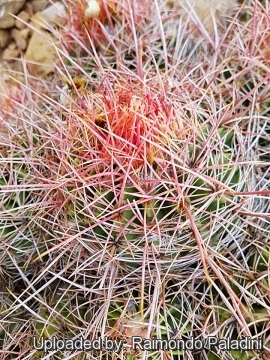 Echinocactus polycephalus var. xeranthemoides, near Cameron, Navajo reservation, Arizona, Usa. (Echinocactus polycephalus subs. xeranthemoides) Photo by: Raimondo Paladini
Echinocactus polycephalus var. xeranthemoides, near Cameron, Navajo reservation, Arizona, Usa. (Echinocactus polycephalus subs. xeranthemoides) Photo by: Raimondo Paladini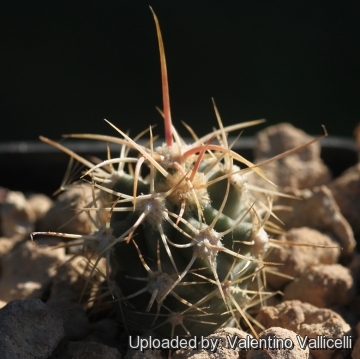 Seedling (Marbel Canyon form) (Echinocactus polycephalus subs. xeranthemoides) Photo by: Valentino Vallicelli
Seedling (Marbel Canyon form) (Echinocactus polycephalus subs. xeranthemoides) Photo by: Valentino Vallicelli Echinocactus polycephalus var. xeranthemoides, near Cameron, Navajo reservation, Arizona, Usa. (Echinocactus polycephalus subs. xeranthemoides) Photo by: Raimondo Paladini
Echinocactus polycephalus var. xeranthemoides, near Cameron, Navajo reservation, Arizona, Usa. (Echinocactus polycephalus subs. xeranthemoides) Photo by: Raimondo Paladini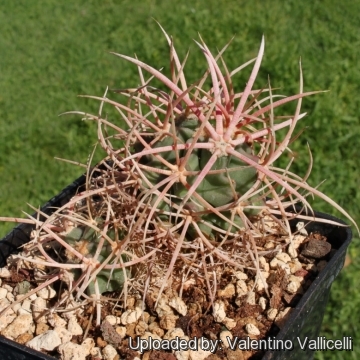 Echinocactus xeranthemoides (Echinocactus polycephalus subs. xeranthemoides) Photo by: Valentino Vallicelli
Echinocactus xeranthemoides (Echinocactus polycephalus subs. xeranthemoides) Photo by: Valentino Vallicelli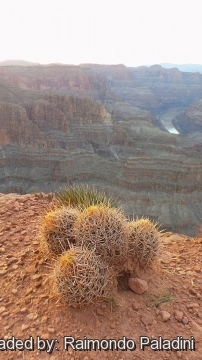 Echinocactus polycephalus var. xeranthemoides - Grand Canyon, Arizona, Usa. (Echinocactus polycephalus subs. xeranthemoides) Photo by: Raimondo Paladini
Echinocactus polycephalus var. xeranthemoides - Grand Canyon, Arizona, Usa. (Echinocactus polycephalus subs. xeranthemoides) Photo by: Raimondo PaladiniCultivation and Propagation: Echinocactus parryi is a summer grower species that is relatively difficult to grow on its own roots as its roots are particularly rot sensitive in cultivation, especially after planting. It is extremely xerophytic and adapted to very dry soils, but plant grafted are easy to grow and no special skill is required.
Growth rate: Slow-growing and very long-lived. It will make clumps given the best conditions. Plants grown from seed begin to branch at nearly 20 years of age.This cactus continues to be, a particular prize among collectors.
Soils: It likes very porous mineral cactus mix soil, but can become too elongated if compost is too rich.
Repotting: This plant needs plenty of space for its roots, repotting should be done every other year or when the it has outgrown its pot. Use pot with good drainage.
Watering: Needs moderate in summer, but do not overwater (Rot prone), keep dry in winter at a minimum temperature of 0°C.
Fertilization: Feed with a high potassium fertilizer in summer.
Hardiness: Reputedly resistant to frost if kept on the dry side prior to, and during, cold weather (hardy to -12 C ° C, or less for short periods), but for safe cultivation it is best to avoid freezing temperatures. It need a very good ventilation.
Exposition: The plant tolerates extremely bright situations. Blasting full sun encourages flowering and heavy spine production.
Pests & diseases: It may be attractive to a variety of insects, but plants in good condition should be nearly pest-free, particularly if they are grown in a mineral potting-mix, with good exposure and ventilation. Nonetheless, there are several pests to watch for:
- Red spiders: Red spiders may be effectively rubbed up by watering the plants from above.
- Mealy bugs: Mealy bugs occasionally develop aerial into the new growth among the wool with disfiguring results, but the worst types develop underground on the roots and are invisible except by their effects.
- Scales: Scales are rarely a problem.
- Rot: This species is not easy and accommodating, often suffer of cryptogamic diseases. Rot it is only a minor problem with Echinocactus if the plants are watered and “aired” correctly. If they are not, fungicides won't help all that much.
Propagation: Seed or grafting. The seeds germinate with extreme difficulty and a low rate of success. Seedlings did not do well either, and some die each year.



















